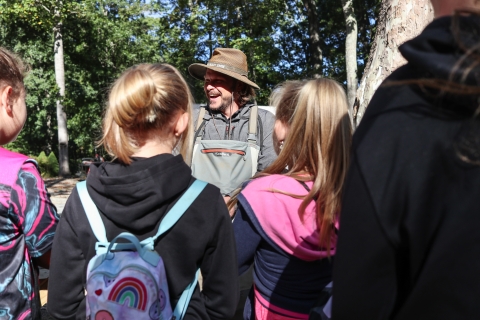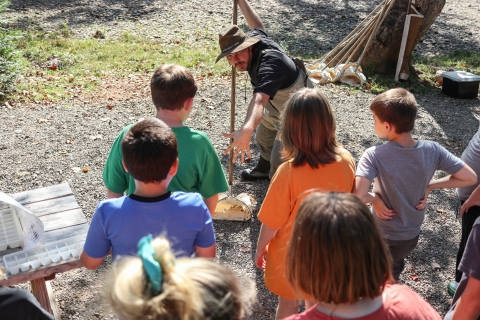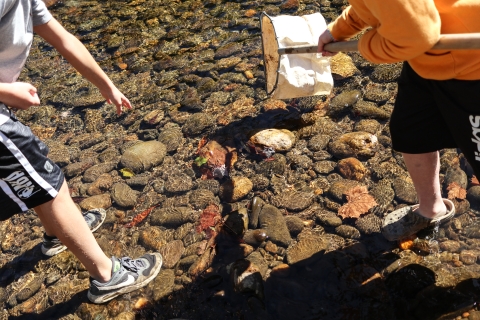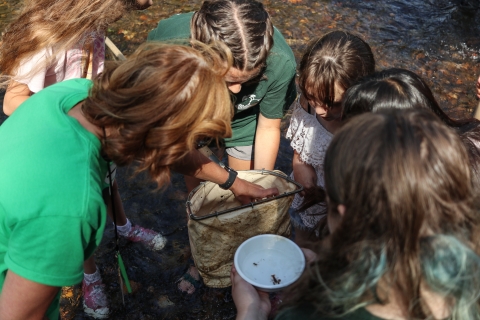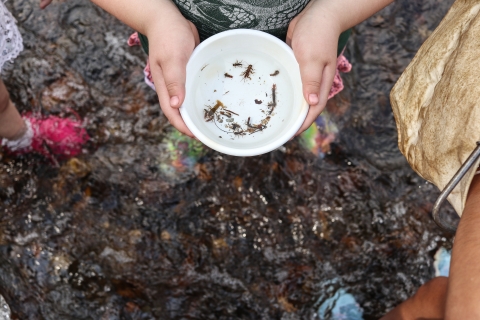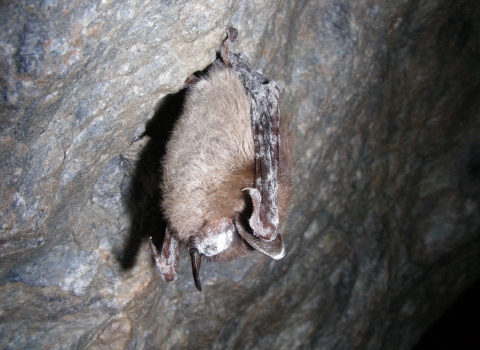The campground at Patience Park, a county park in Yancey County, N.C., was still quiet on a recent September morning, full of RVs showing no signs of life, when staff from the Asheville Field Office arrived and began setting up for the dozens of fifth grade students soon to arrive on their field trip.
Patience Park is used as a weekend get-away by many locals. For the Fish and Wildlife Service and the arriving students it provides easy, public access to the South Toe River. The river rises on the eastern slope of Mount Mitchell, the highest peak east of the Mississippi River. It’s home to high profile Appalachian river species like brook trout and eastern hellbender. It’s also home to the endangered Appalachian elktoe mussel.
For more than a decade, fifth grade students from across the county have spent a day getting acquainted with the river through the annual Toes in the Toe Festival. During the event, students rotate through a series of stations focused on the river and its surroundings. Each station uses a different educational medium to match the diverse student interests, but the common objective of each station is to promote stewardship of the community’s streams. Penland School of Craft leads an art station, with the student’s work going on display at the local grocery store. Local agriculture is often represented, this year it was beekeepers. A fish station typically has the students in the river collecting fish with a kick seine. The Service staffs the aquatic invertebrate station each year, as the river is home to the Appalachian elktoe, protected by the Endangered Species Act since 1994. At the station, students learn what an aquatic invertebrate is and what this group of animals tells us about stream health. Then the students break into small groups, grab a kick net and spend time collecting invertebrates from the river. Afterwards, they use a simple identification key to determine what they caught and what the invertebrate community says about stream health. While they may not gain a deep understanding of how to use stream life as a gauge of stream health, some likely leave the station with fun facts, like how dragonfly larvae can flee predators by squirting water out their butts, and hopefully all will take home a positive river experience.
Topographically, Yancey County is a pair of parallel watersheds – the South Toe River to the east and Cane River to the west. Both streams have the endangered mussel, so river stewardship is an emphasis of the Service, which has also supported an outdoor classroom and nature trail at the county high school, which sits on the banks of the Cane River. Stream health is also tied to the area’s outdoor recreation economy as the streams are a draw for anglers, tubers, swimmers, and paddlers.




